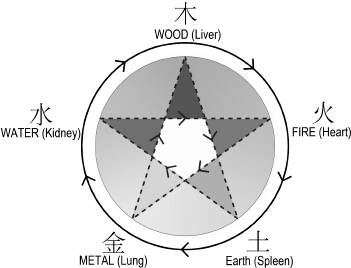Most subjects in science fall under one academic discipline, but medicine is generally separated into evidence-based systems such as Conventional Western Medicine (CWM) and other traditional medical systems, for example Traditional Chinese Medicine (TCM). CWM tends to ignore the unity behind phenomena and the power of invisible matter. TCM sees the human body as being part of nature to be connected with the universe, and human information and energy exchanges as being influenced by gravitational fields, electromagnetic waves, biological waves, and especially weather, and lunar (ocean tide and biological clock, etc.) changes.
The human body is not limited to its anatomy, but is an expansive system centered in five viscera with their spirits (Heart, Liver, Lung, Spleen, and Kidney). The overall system is controlled by the Heart, and the brain is an information center controlled by the Heart .
After observing and researching over thousands of years, TCM holds that the five viscera have different structures with visible functions, and yet have an invisible body with unseen functions. Ancient Chinese sages created the “Five Elements” theory to describe the functions of the human and its relationship with the environment. With the establishment of “modern system science,” data increasingly supports the Five Elements theory for the complicated human system.
Combined with Yin–Yang theory, the Five Elements theory is, philosophically, a material–energy–information theory supporting the idea that the natural world is composed of five basic energy elements symbolized by the Qi of Wood, Fire, Earth, Metal, and Water in motion and change. Every element includes Yin and Yang.
The ancient Chinese theorized Wood (trees) as spreading out freely, Metal (weaponry) as being sharp and hard, Fire as flaring upward, Earth as producing myriad things, and Water as flowing downward. They placed all things in a category based on their properties and actions. The inter-relationships among the Five Elements link together in sustaining a unified world entity, as shown in .
The Five Elements, as a theory of medical physiology and pathology, rest on the five Zang organs — Liver, Heart, Spleen, Lung, and Kidney. Their inter-relationships, links to other organs, tissues, and physiological and pathological phenomena are explained in the Five Elements theory.


